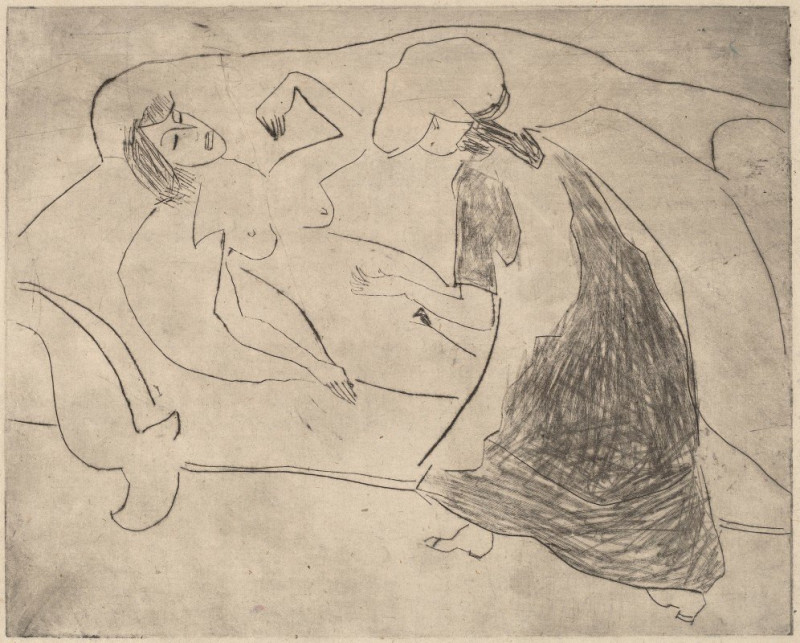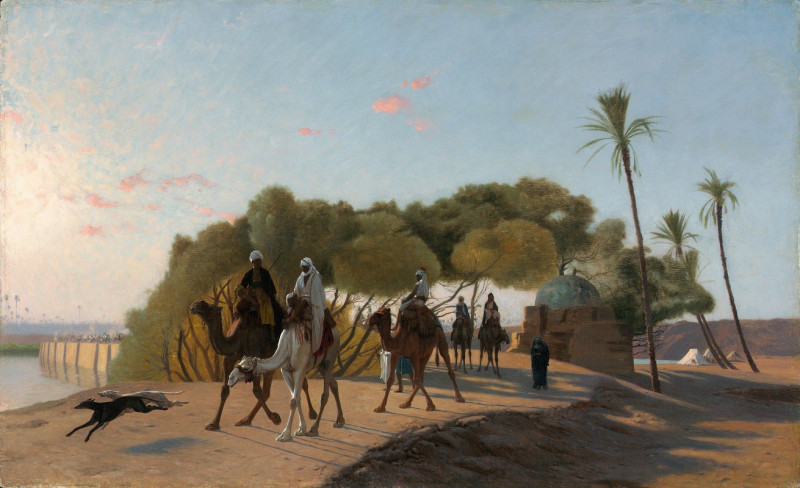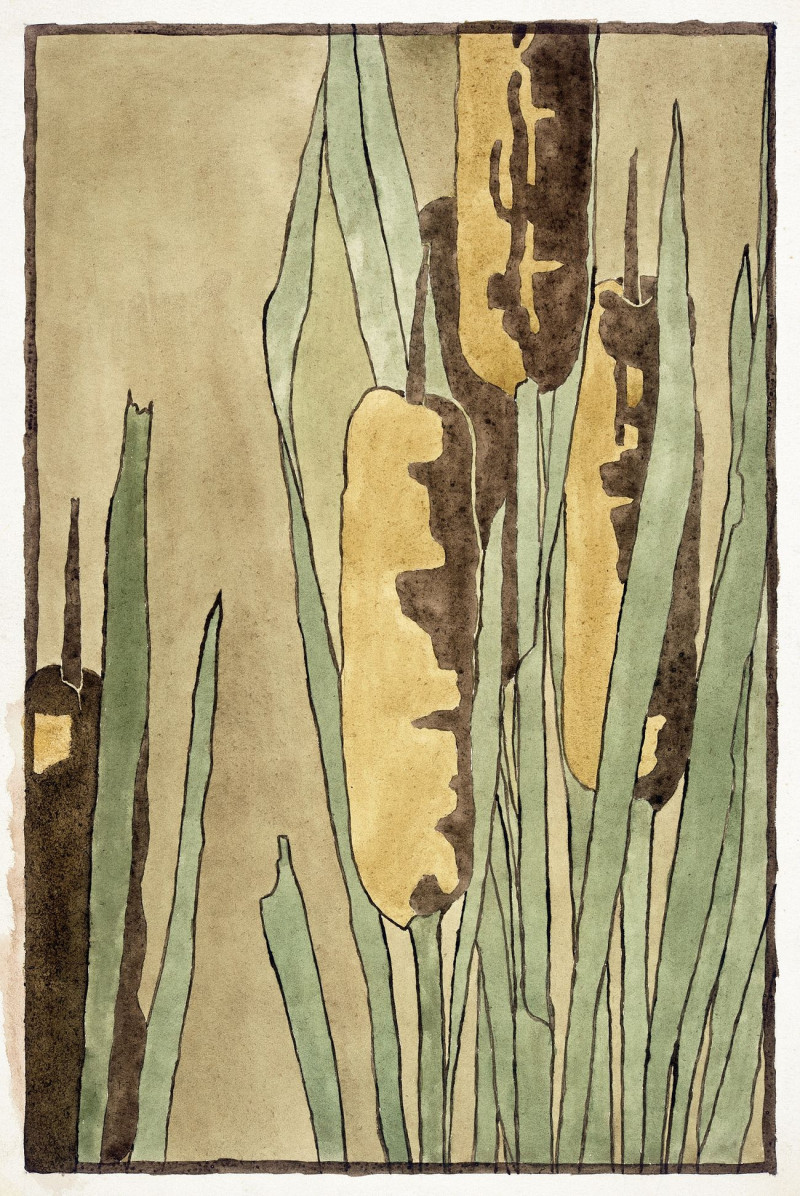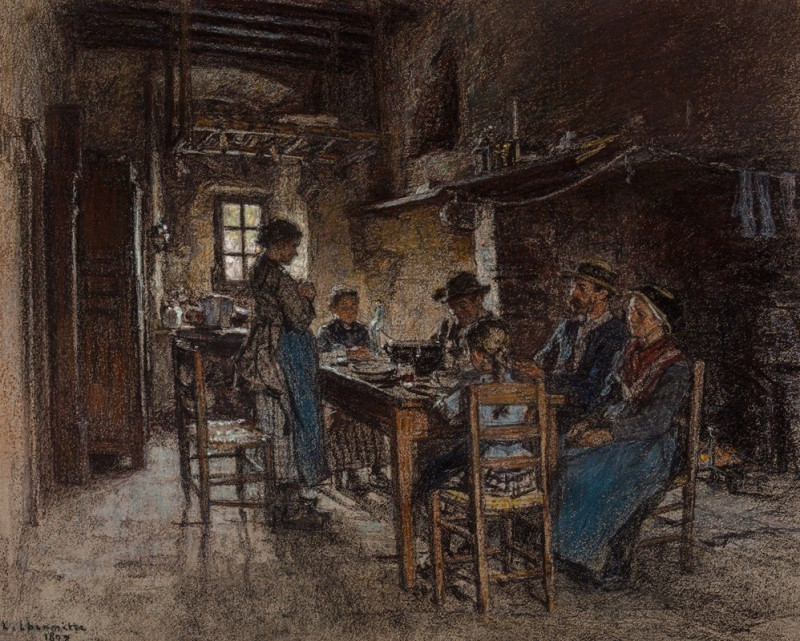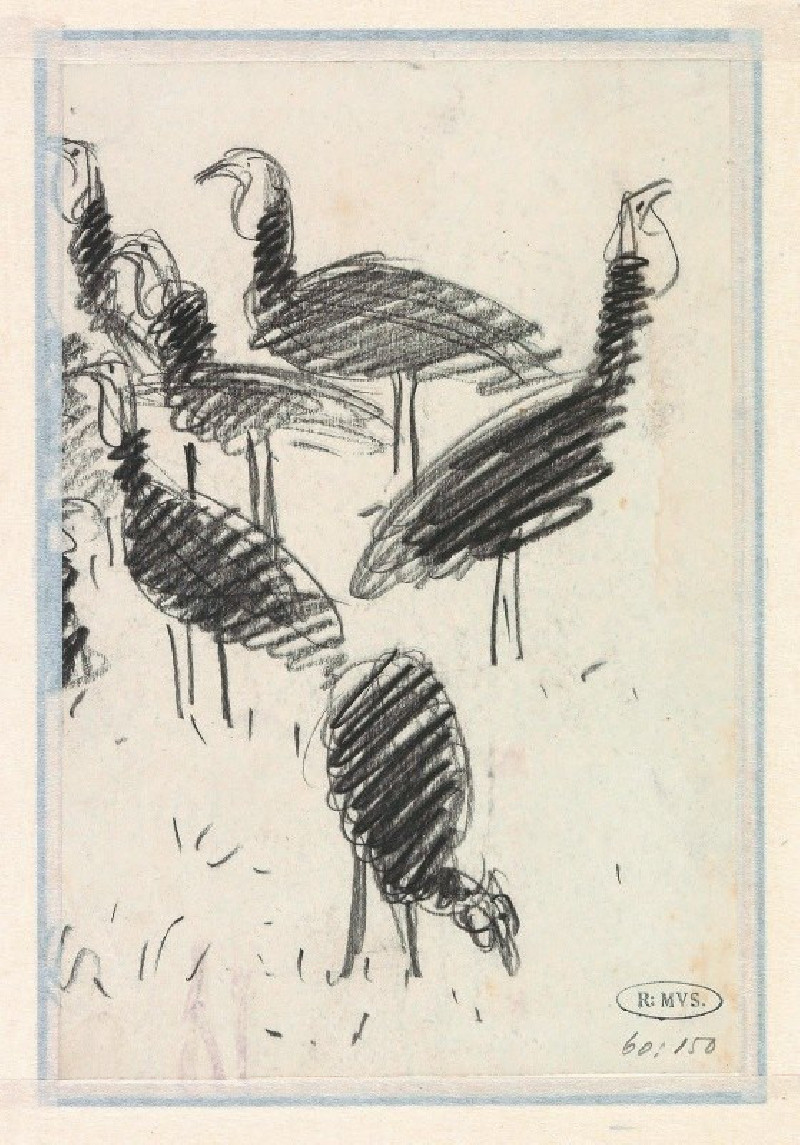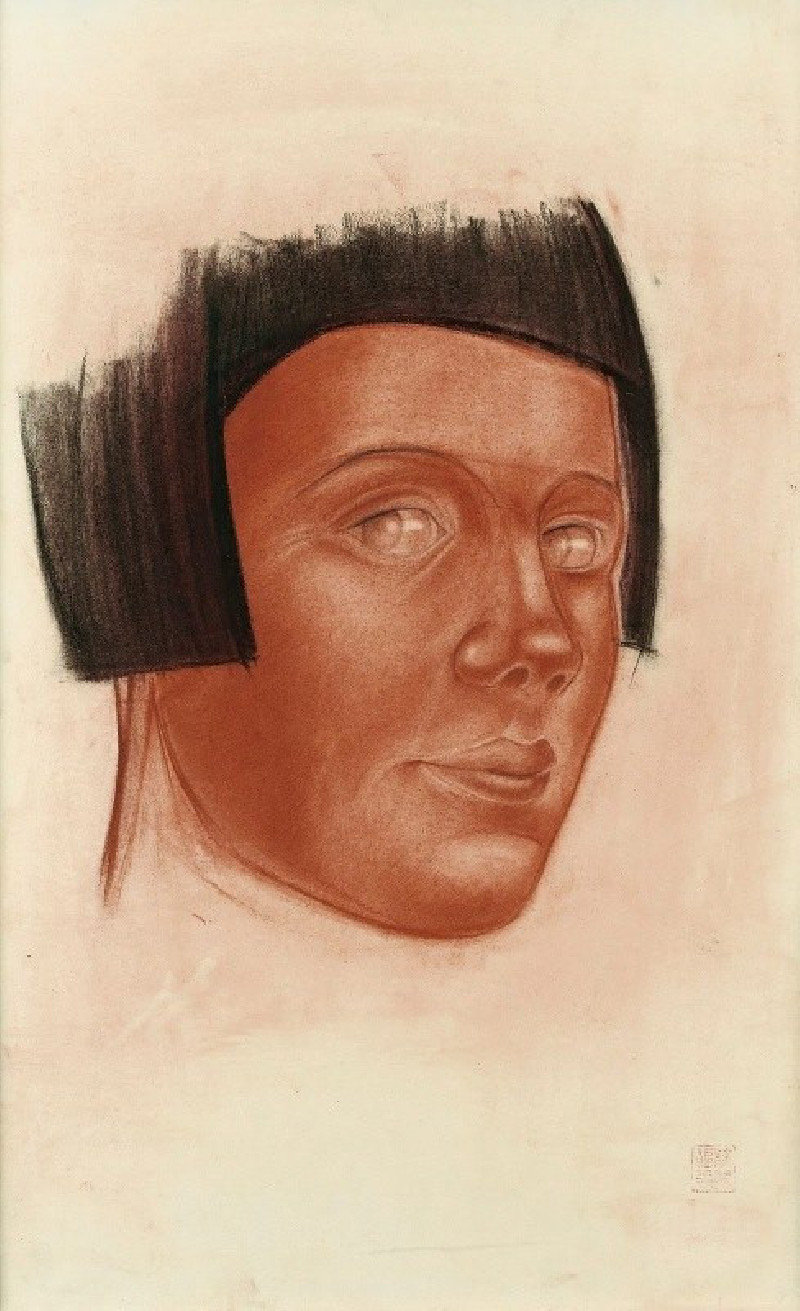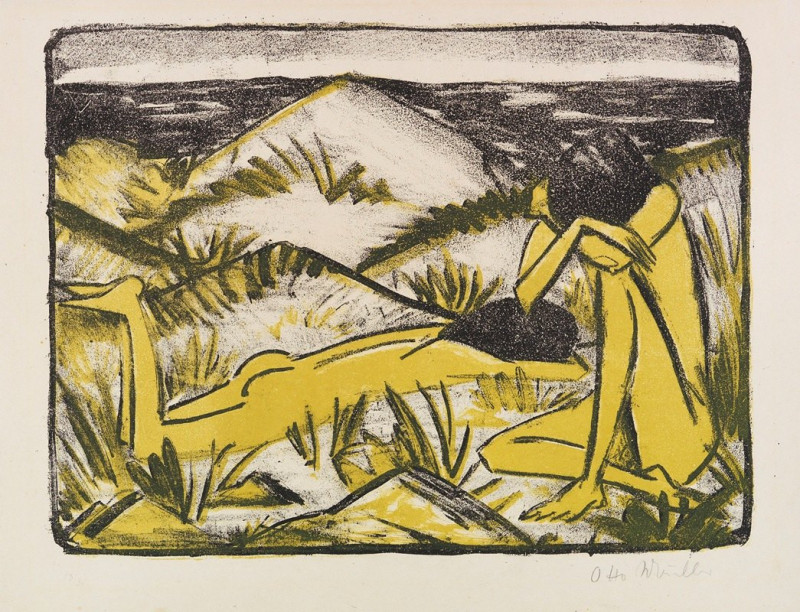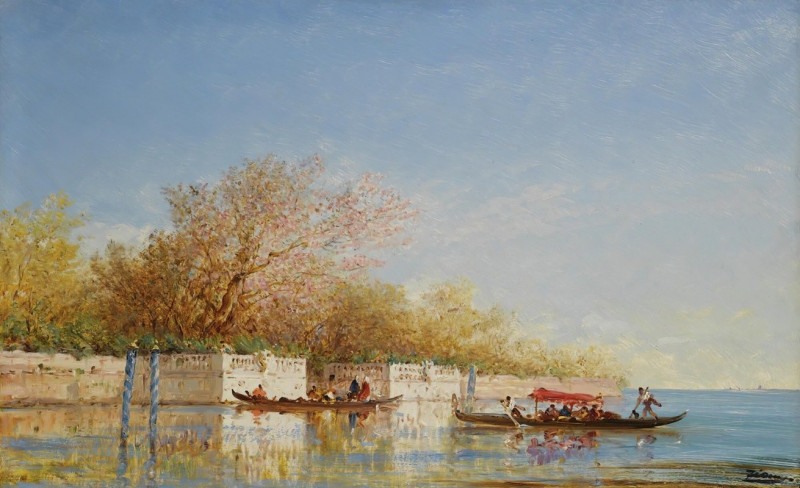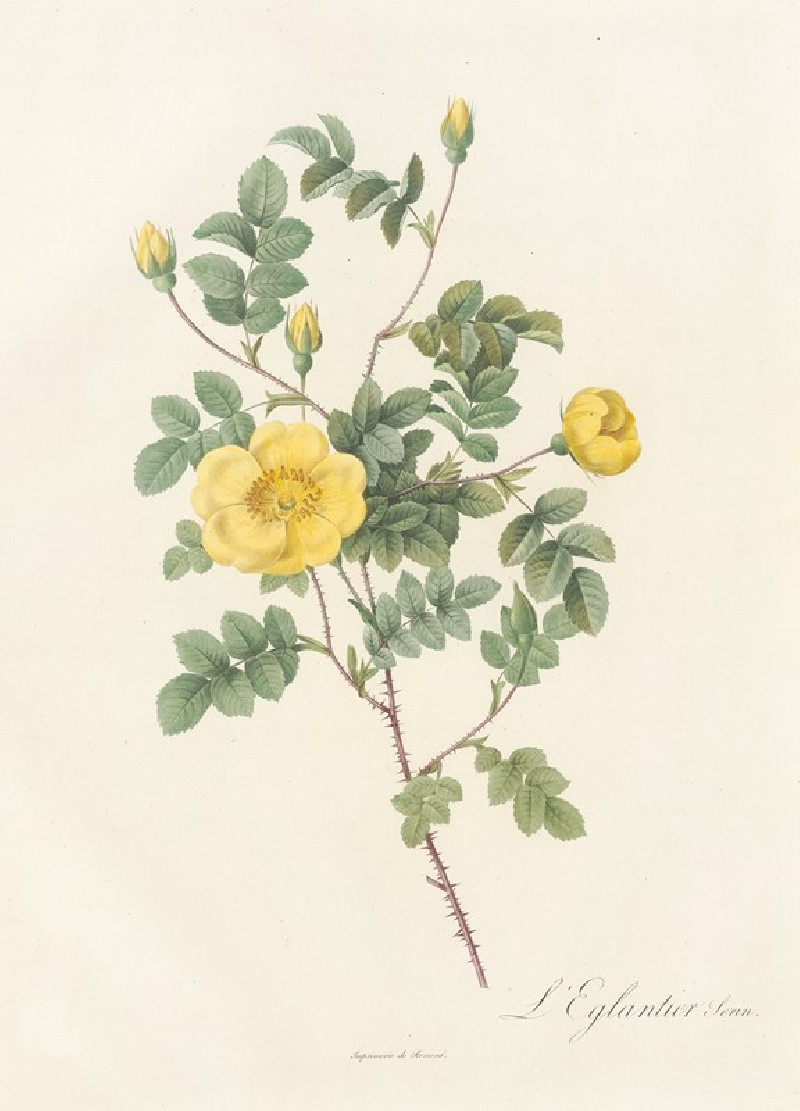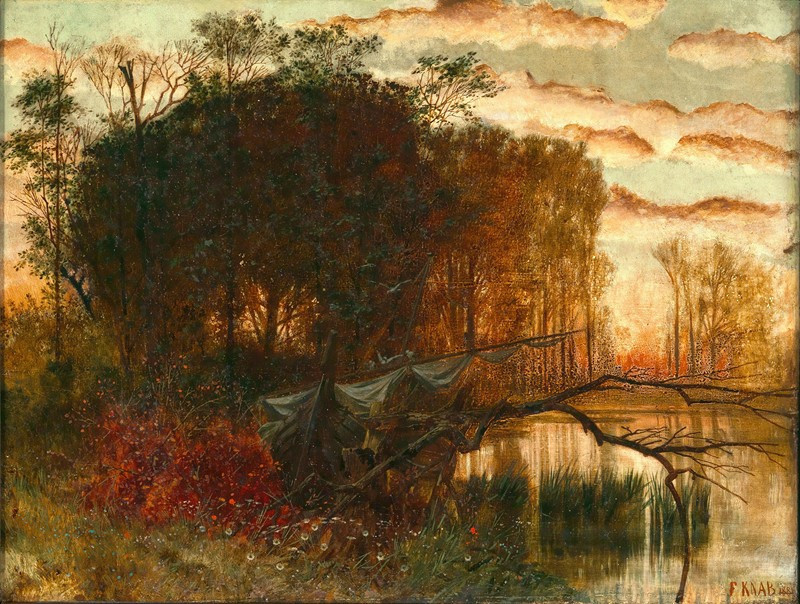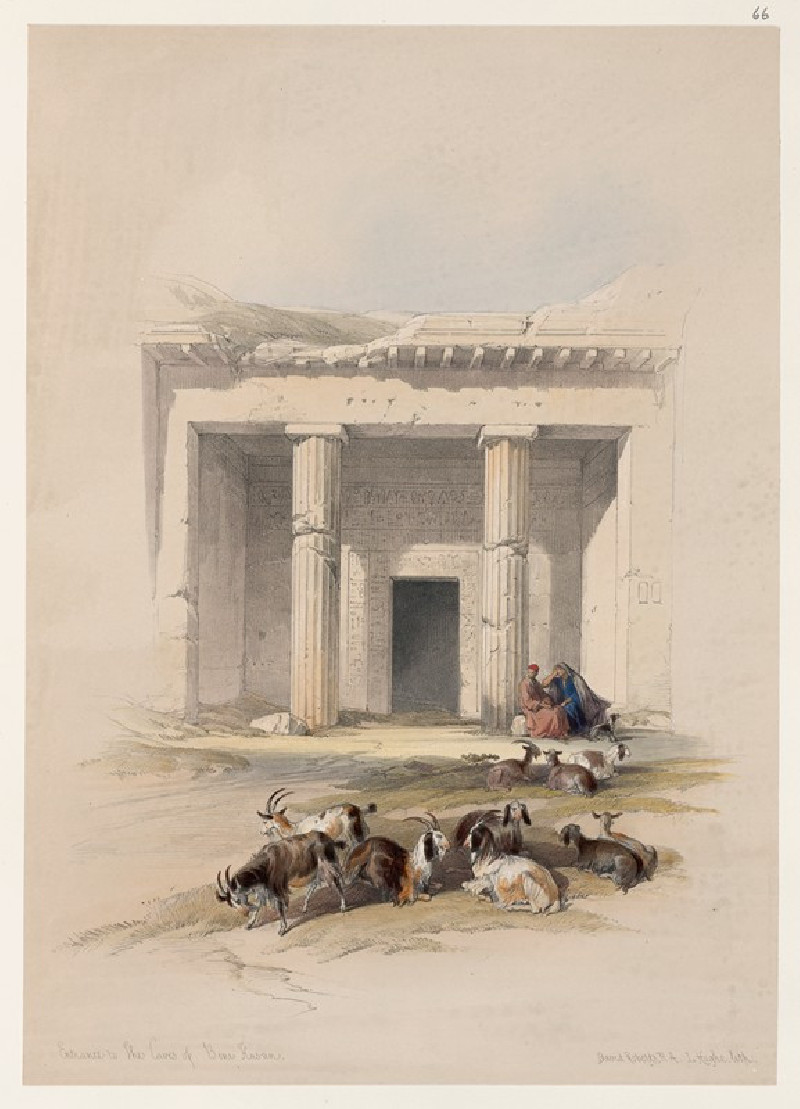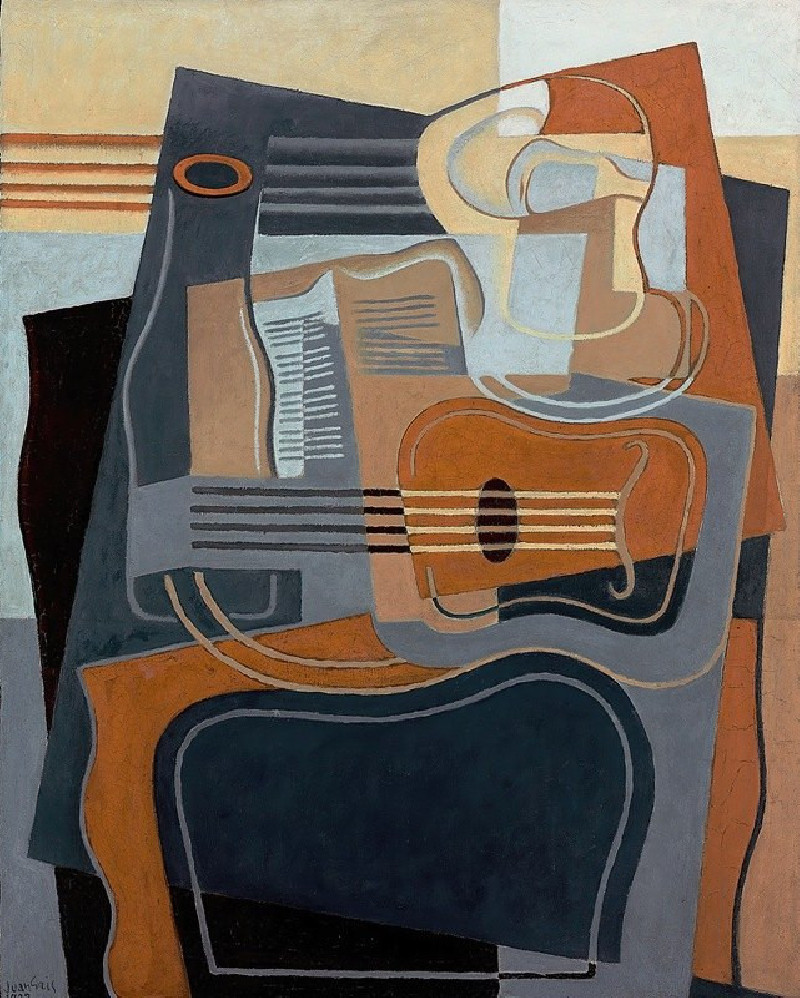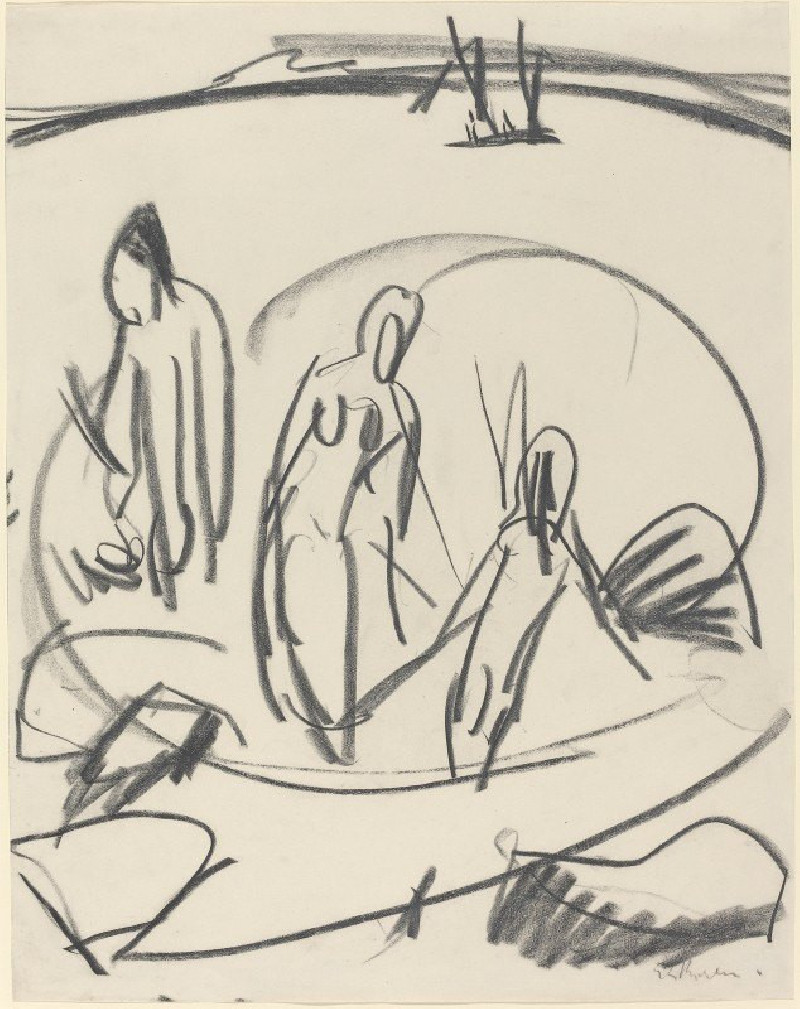Girl, with Another Rubbing Her Belly (1910)
Technique: Giclée quality print
Recommended by our customers
More about this artwork
Welcome to an introspective exploration of Ernst Ludwig Kirchner's 1910 painting, "Girl, with Another Rubbing Her Belly." In this expressive work, Kirchner captures two figures engaged in a moment of intimate connection. The piece reflects the characteristics of the Die Brücke movement, emphasizing raw emotions and the breaking away from traditional artistic norms.In the etching, one girl lies horizontally across the frame, with her body relaxed and slightly contorted, conveying a sense of vulnerability and rest. Another figure, depicted in a flowing dress, leans over her, gently rubbing her belly. This gesture can be interpreted as one of nurturing and comfort but also hints at the mutual emotional support prevalent in close relationships.The composition’s simplicity and the fluid, almost abstract line work add a dreamlike quality, pushing the viewer to focus on the emotion and interaction rather than the detail of the figures. Kirchner's use of stark contrasts and minimalist detail underlines his focus on the expression of feeling over the representational accuracy.
Delivery
Returns
Ernst Ludwig Kirchner (1880–1938) was one of the most important German Expressionist painters. He was a co-founder of Die Brücke, a group of German expressionist artists formed in Dresden in 1905. Die Brücke and Kirchner took inspiration from Vincent Van Gogh and Edvard Munch, as well as African and Oceanic art. They used woodblock printing as a medium to showcase their signature style: flat, unrealistic images with vivid colors. The recurring themes in Kirchner's artworks included exotic cultures, faraway landscapes, self-portraits, dancers and Berlin street life. His paintings and prints effectively portrayed non-European cultures despite the fact that he never traveled outside of Europe.

